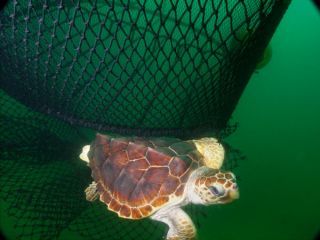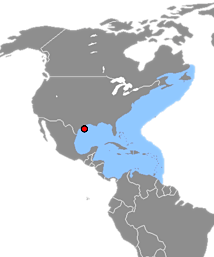 Kemp’s Ridley sea turtles are considered the most endangered sea turtle in the world, and are exceedingly rare visitors on North Carolina beaches.
Kemp’s Ridley sea turtles are considered the most endangered sea turtle in the world, and are exceedingly rare visitors on North Carolina beaches.
Yet Kemp’s ridley turtles have been showing up this year in increasing numbers in North Carolina’s coastal waters, according to a report in the Winston-Salem Journal.
Alhough she doesn’t know why the turtles, which are strictly protected by national and state law, are more prevelant, Karen Sota, a leader at the Karen Beasley Sea Turtle Rescue and Rehabilitation Center, said it was a “good sign.”
The map below shows the historic range of the species.
Meanwhile, the LA Times reports that efforts to move thousands of turtle eggs away from damaged beaches in Florida has been largely successful. Around 14,000 baby turtles have hatched safely after being relocated.

Robbin Trindell, biological administrator for the Florida Fish and Wildlife Conservation Commission, took a boat trip in late August to the gulf and surveyed some of the thickets of sargassum, the seaweed that is a vital habitat for turtle hatchlings, and didn’t find any oil.
“The habitat was beautiful. There were all sorts of invertebrates, fish, crabs, shrimps, no sign of oil and the plants were healthy,” she said.
“From the information we have so far, the relocation was very successful. We’ve heard reports of 94% hatching success for one nest,” she said.
Almost all female Kemp’s ridley turtles return each year to a single breeding ground along a beach on the northern coast of Mexico in the gulf (indicated by the red dot on the map).



















